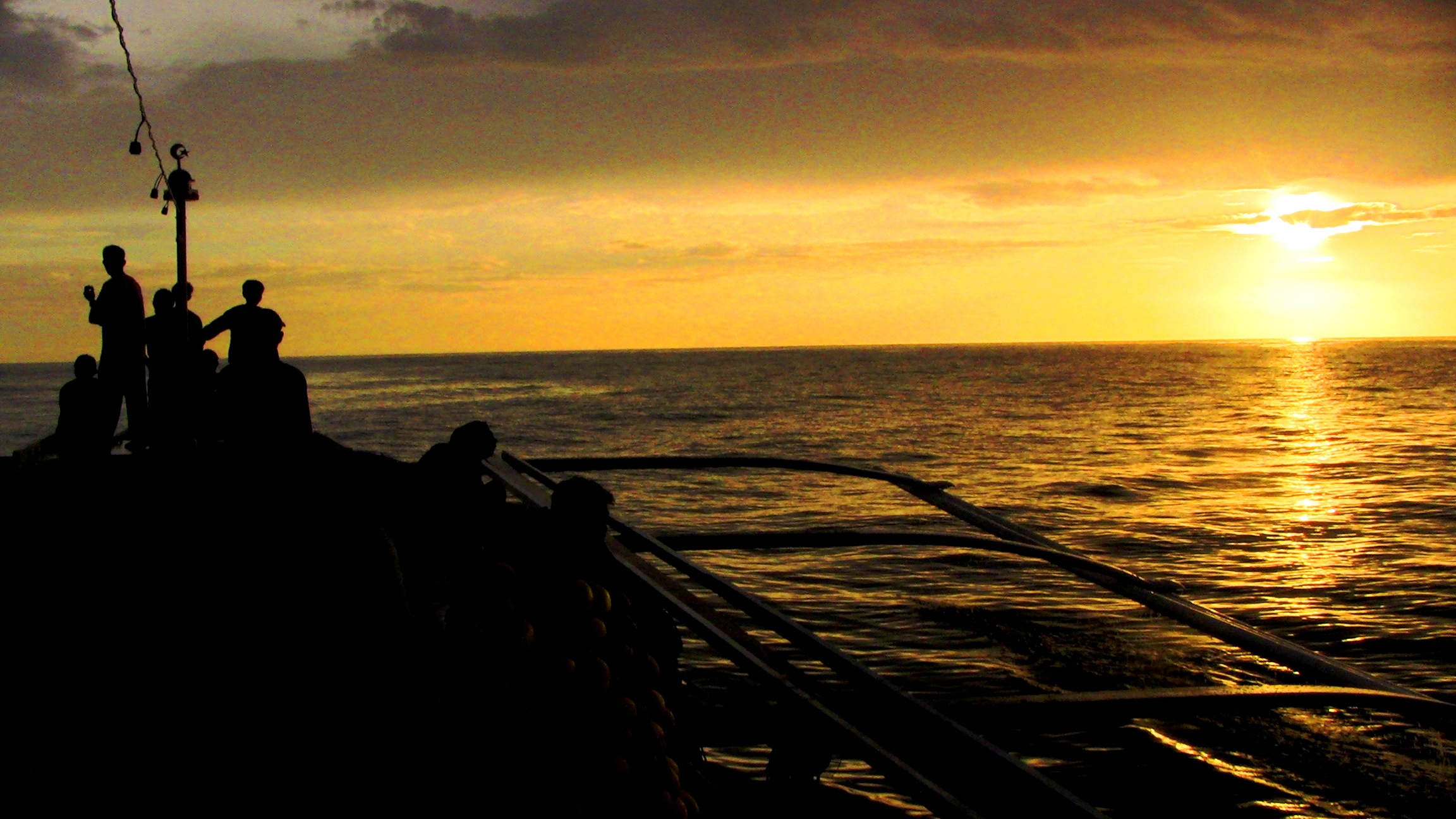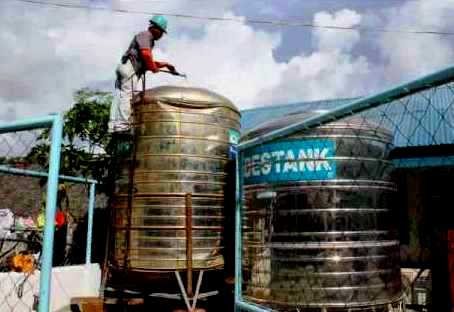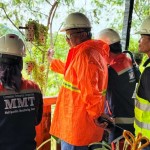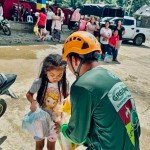-
Natural born seafarers. Members of the Sta. Maria Fisherfolks Association cast-off on F/B Ruaida. After a year of fishing operations, the fishing vessel continues to generate income for the fishermen who were once members of the MNLF. TVIRD ushered the development of Sta. Maria Village located six kilometers away from the town center – an inlet zone of the town that faces Sulu Sea.
-
An employee of TVIRD fixes the faucet of the tank supplying clean water to the community of Sta. Maria Village.
-
Located at the heart of the territory of former MNLF combatants, Busicong used to have limited access to education. TVIRD then built a 6-room school building named after Imam Nasaron C. Haron, whose family provided the school site. The company likewise initiated the installation of electric power for the school – which led to the electrification of the whole community.
-
Man of action. Sta. Maria Village Chairman Moarip Esnain Salvador (right) received 15 rolls of interlink wires to fence his community’s barangay hall and secure the barangay properties kept within. These were turned-over to the barangay recently by Siocon Municipal Administrator Atty. Jose B. Bongalos.
Siocon, Zamboanga del Norte / February 2017 – The afternoon sun casts its long shadow on Sta. Maria village here as Moarip Esnain Salvador watches a basketball tournament aggressively played by the youth of his village. He obviously enjoys watching the game while waiting for his water containers to be filled-up in a nearby water tap stand.
Salvador, who is the village chairperson, still finds time to fetch water for his family despite his busy schedule. It is not just another task for him. Actually, he enjoys it as it reminds him of the hard work that he and a mining company had done to realize a water system long denied to the villagers.
Sta. Maria village has a population of over 4,000 and is one of the eight coastal barangays of this municipality. Established in 1960, the village today is inhabited mostly by Muslims from the Kalibugan and Tausug tribes. But the lack of potable water since its founding has also become part of the villagers’ daily life like in the vast number of barangays in the country.
The village is among the 26 impact barangays of TVI Resource Development Philippines Inc. (TVIRD), a mining company that produced gold and silver – and later on, copper and zinc concentrates – in Sitio Canatuan, Barangay Tabayo. Initiated and requested by Salvador and his barangay councilmen, TVIRD built the water system in 2010.
Sta. Maria is a fishing village that likewise engages in farming. Both forms of livelihoods are the principal sources of income for its people.
“Life was hard before,” Salvador said, reminiscing life in the village seven years ago. He said many of his constituents were often sick because of the insufficient supply of potable water in their households due largely to its geography. The coastal village is located six kilometres away from the town center, an inlet zone of the town that faces Sulu Sea.
Social license
According to Salvador, villagers welcomed TVIRD into their community when it started its mining operations in 2004.
“In fact, when anti-mining groups in Siocon held pickets and rallies against the company, we never participated even if a high official of the local government asked for our support,” he said.
“As a government official, I am supportive of mining since it can help curb unemployment, which is one of the major problems of our country. It (TVIRD) also had social development programs for barangays of the host municipality, aside from taxes that it paid to the government,” he added.
The mining company owns a warehouse in Sta. Maria. The town’s lone port located in this village once served as the transshipment point for the company’s copper-zinc concentrates.
Employment, development projects
The village chair was right in welcoming TVIRD. Many of his constituents became company employees while many were also hired as seasonal workers during every shipment. Economic activity was high in Sta. Maria during every shipment, which lasted for seven to ten days. Eateries for port workers, ocean vessel personnel and truckers who hauled copper concentrates had availed their local delicacies. Fishermen brought in their catch to these eateries and to the kitchen of TVIRD, which provided free meals and snacks for their employees,” he narrated with amusement.
“Majority of my constituents had money during those days. And it had an overall domino effect. People had money to buy goods in the Poblacion. So grocery and department store owners were happy too,” he said.
The village chair was also right about social development projects from the company. TVIRD, through Maple Tree Foundation and in partnership with Petron Corporation and Habitat for Humanity, built a school in one of its sitios. Imam Hasaron C. Haron Elementary School is a six-room school building constructed in a scenic mountain overlooking Siocon’s seas and is now providing primary education for the sitio’s children.
“Before, school children had to ride a banca to be able to reach a school located in Sta. Maria proper. It was unsafe especially during typhoons,” the barangay chair said. He also recalled that the company built a foot bridge for students of Sta. Maria National High School.
The school, a testament to the company’s high regard for education for marginalized Filipinos, is located at the heart of the area where former Moro National Liberation Front (MNLF) combatants now peacefully reside. A fishing boat was provided to them also by TVIRD since fishing is their main source of living.
Easier life
“Life was easier during TVIRD’s mining operations. We hope that the company will be able to operate its tenement in Malusok. If the project will be realized, I am sure many of my constituents will be employed again since the company adopts a policy of prioritizing local residents,” he enthusiastically added.
“Today, the water system still serves the community,” Salvador said with pride. He added that the project has become a living testimony of the benefits enjoyed by Siocon residents from the legitimate mining operations of a mining company known for being a responsible one.
TVIRD’s mining operations in Siocon ended in 2014. However, the social development projects it has implemented for the people of Sta. Maria live on.
“Everybody here yearns for the company’s come back and we pray to Allah that it will mine again,” he added.
TVIRD owns a tenement in nearby Malusok, a sub-village of Kilalaban of the neighboring town of Baliguian and is within short trucking distance of its former Canatuan mine site. The company is now on its final mine rehabilitation stage of the areas it affected during its mining operations.
*******






